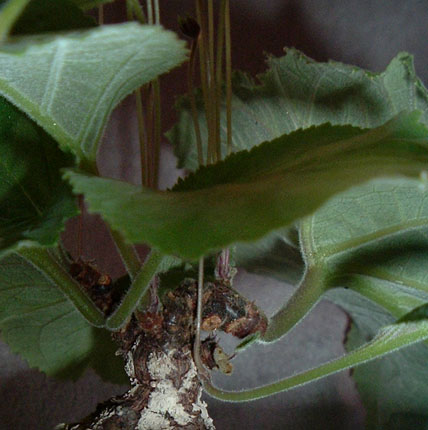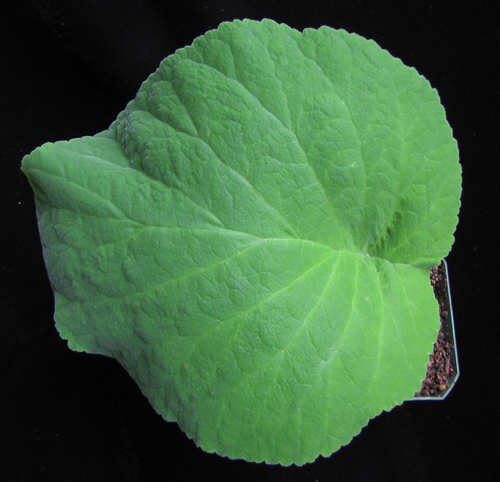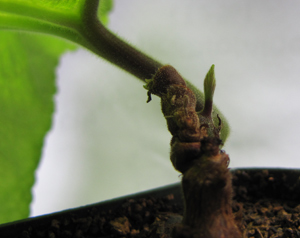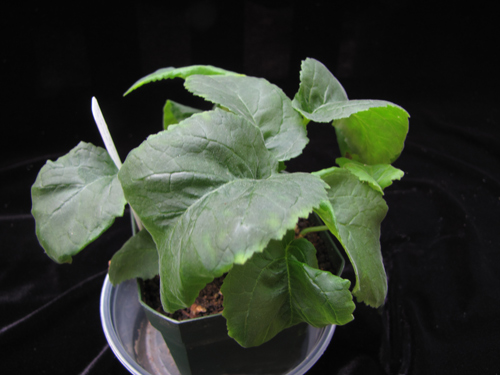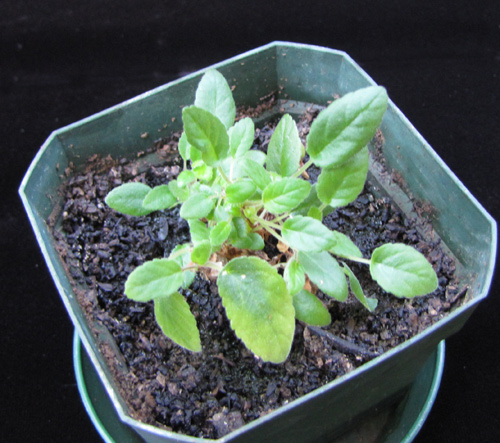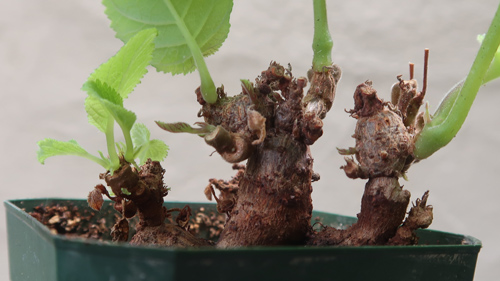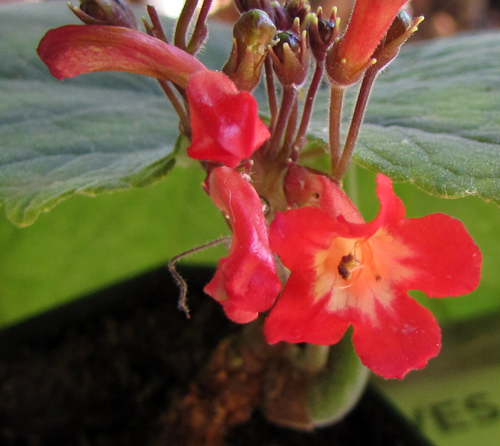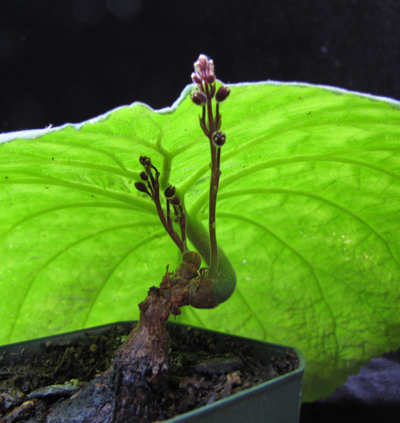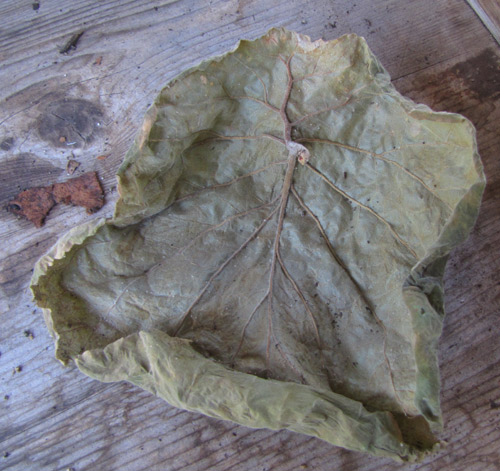Sinningia tuberosa
This species can have one to many leaves. The flowerstalks come directly from the tuber, a property it shares with other sinningias such as S. defoliata, but it is not closely related to them. It is not an easy species to grow but worth the effort.
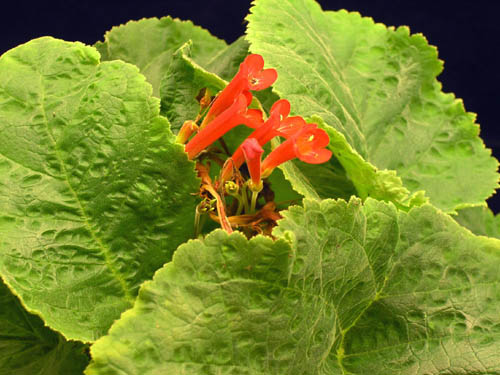
- Blooming from the tuber
- Plant habits
- Tuber
- Flower
- Dried leaf
- This species with other unifoliate sinningias (on a different page)
- Feature table
- External link
- Publication and etymology
This picture was taken by Dave Zaitlin, of his own plant.
